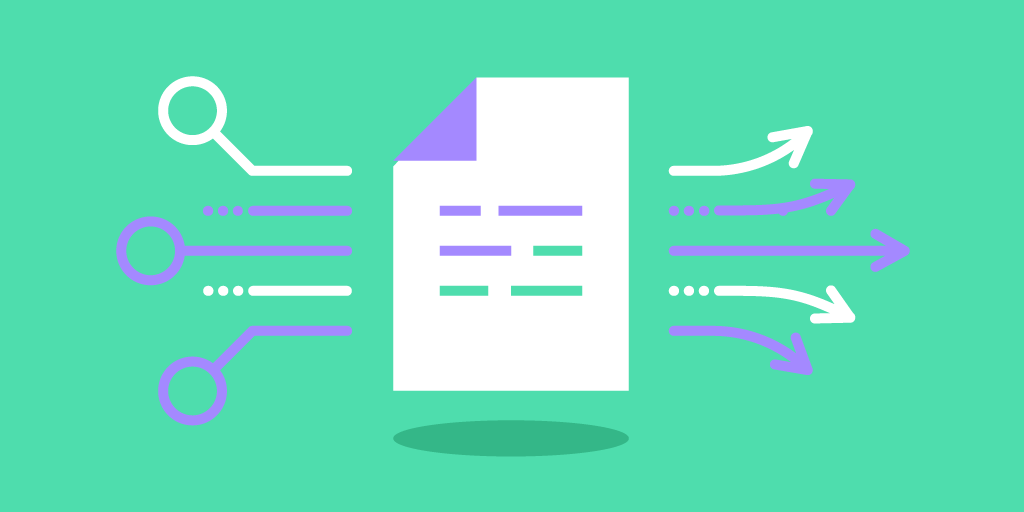As a business owner, you want to generate revenue and deliver the best possible experience for your customers. At the same time, you're trying to keep the costs low without compromising on product quality.
This is what operational efficiency is all about.
In just a few words, operational efficiency is about intelligent resource allocation, employee retention, using the right technology, and planning.
Improving operational efficiency is not a one-and-done initiative, either. Even the most well-oiled business strategy demands attention.
When it comes down to it, you need every bit of help you can get. So here’s a guide to consistently polishing your operational efficiency with the help from electronic queuing systems.
3 main stages of improving operational efficiency
Operational efficiency rests on three pillars: planning, measuring, and improving. Of course, with only three support points, operational efficiency is a complex balancing act.
To put it shortly, three stages could be described like this:
1. Planning
Understand what your customers want
Develop processes that deliver what customers desire
2. Measuring
Review your service strategy and business processes
Set concrete business goals
3. Improving
Identify service bottlenecks
Execute and refine new business strategies
If you wanted a quick summation, then that’s the gist of it.
The actual process of improving operational efficiency consists of analyzing the results, making sure the goals are being met, and figuring out how better to change the processes.
Although you may find it strange to tackle operational efficiency from the standpoint of queues and queuing technology, waiting lines are in themselves a good indicator of a business’s performance.
For one, the shorter your turnaround time is, the more likely you are to leave a positive impression. It shows, right out of the gate, that you’ve invested time and energy into improving every part of customer experience — including the wait.
That’s why with a queue management system, you get more than a line management solution. You get a tool to help you understand, refine and improve every aspect of your service.
Step 1: Automate repeatable processes
One of the bigger banes of business excellence is over-reliance on having employees manage everything manually.
There are many work-intensive processes that cut into your staff’s time unnecessarily. Too much administrative hassle leads to employee frustration, which erodes staff morale and productivity and causes stress and conflicts in the workplace.
Often, businesses would have front-desk service agents manage crowds and queues. Needless to say, this does no favors to the speed nor the quality of service.
Implementing a virtual queuing system can vastly speed up service delivery processes by automating them. Each visitor is essentially tasked with checking themselves into a queue.
This gives customers more control over the queuing process (which service line they want to join, who they want to be serviced by, what special preferences they have, etc.).
This also saves you and your staff valuable time that could be best spent elsewhere — namely, making your service stand out.
The only caveat is that you have to be careful about finding the right balance between customer service automation and the human touch. Don’t go too far with erasing your business’s personality
Step 2: Manage employee time
To build up on the previous point, managing employee time is part and parcel of improving operational efficiency.
Here’s why it’s important: by monitoring your workforce and their performance, you can be sure that nobody on your staff is overloaded with work.
Overworking is a classic case of diminishing returns. The more consecutive hours people work, the less attentive they become. Mistakes are abundant, and burnout is inevitable.
Alternatively, some of your employees may experience underload. Working too little may sound like a sweet deal at first, but boredom and low engagement are the precursor to poor morale.
If you notice that some staff members “sit on the bench” too much, perhaps it’s best to assign them to a different, more suited position.
Now, how does a queue management system come into play here?

What a typical performance page looks like in Qminder
With a queue management system, you can take a look at how well your employees are performing either at any given moment, or over a period of time. We’re talking individual employees, or entire service locations in general.
Step 3: Set provable KPI goals
KPI, or key performance indicators, are measurable metrics of business performance. KPIs reflect whether the execution of processes achieved the required result.
An example of a KPI could be:
A number of new qualified leads in your sales funnel.
Improving the average time of conversion.
Boosting your employee engagement rate.
If you want to be smart about setting your KPIs, you have to be SMART about it. That’s not a tautology; that’s an acronym that refers to goals that are:
Specific: non-vague, well-defined, concrete objectives whose achievement you can verify.
Measurable: you can quantify the progress and see how close you are to achieving the goal.
Assignable: find a relevant person who can take ownership of that goal and see it to the finish line.
Relevant: your smaller goals should be all part of a bigger picture.
Time-bound: you need a target completion date, so that achieving the goal would not be an indefinite action that you can always postpone.
So, saying “I want my customer service to be fast” is of no big use to you. Instead, set up a goal that states “I need to cut down on average customer wait time by at least 10% before the next quarter”.
That's how you set your KPI targets: the less vague the goal is, the less vague is your future as a business owner.
Step 4: Measure service performance
The classic adage says, “you can’t improve what you don’t measure”. Measuring performance and analyzing feedback is the important step that follows planning your KPIs.
One of the factors that both hamper your ability to measure performance and negatively impact your staff’s morale is antiquated technology.
When employees can’t get their work done with the tools provided, they start feeling additional pressure. What should ideally take them mere minutes instead wastes up to hours of their time.
The resulting frustration transfers to customers, who lose confidence in your employees’ ability to take care of them.
By assessing how well your resources (finances, labor, effort, time) are put to use, you know which corners to put and which aspects of your service to emphasize.
But, once again, this is something that comes only after setting KPIs for yourself. Simply measuring performance without setting a concrete goal is setting yourself up for failure.
If you don’t know what you’re trying to accomplish and how you’re doing so far, how can you possibly effectively execute your business strategy?
Short answer: you can’t.
You need an effective management tool to achieve workplace satisfaction and improve service performance.
Step 5: Review service processes
Connected to measuring performance, and being the direct result of it, is the process of reviewing your service procedures: all the how’s, who’s and what’s.
For any business, the way to clamp down on unnecessary costs is to identify underperformance and deal with it right away.
Once you know all your operational inefficiencies and bottlenecks, you can address them before they start cutting into your profit margins.
The reasons for underperformance at the workplace could be multiple. To name a few:
Lack of growth opportunities. Growth opportunities drive motivation, as very few people are content with doing the same tasks for the same pay, for years on end.
Work-related stress. Employee stress can manifest itself both physically and mentally. Overburdened team members lose their productivity levels, and the resulting frustration transfers to everyone around them: clients, colleagues, and even family members.
Bad working environment. Aesthetics are only one part of it; the general vibe in the office is much more important. Perks and benefits, interpersonal relationships within the workplace — all of those play a big role.
Lack of challenges and/or incentives. We’ve covered the issue of underload above, but it bears repeating: if duties are monotonous and offer little reward, employees are tempted to switch their autopilot on and feel unobligated to try harder.
Unclear objectives/lack of direction. Expectations of the job should be clearly communicated before a team member assumes a new role. Same goes for any changes that happen at the workplace (responsibilities, policy, guidelines, etc.)
Staying on top of your game lets you vastly improve employee retention and satisfaction.
So how can an electronic queue management system help you audit your service practices and procedures? Simple: a digital queuing system gives you an in-depth overview of both general and individual performance.
Optimizing staff can help you cut down on unnecessary labor costs or invest smartly in your employees to avoid future expenses.
For example, by seeing that specific service lines are undermanned, you can allocate your resources there and offer additional training to service representatives.
There’s also general data about your customer service that electronic queuing systems provide:
Customer flow and traffic volumes
Peak times of business at your location
Average wait time indicators
Based on these metrics, you can make on-the-go improvements to your business strategy and customer satisfaction procedures.
Step 6: Enable effective communication
Few things are as important to your bottom line as effective communication. This does not necessarily mean exchanging actual words.
This could be something as simple as clear delineation of duties and making sure everyone is on the same page with regards to strategic goals of the business.
Good communication makes it easy to collaborate: if everybody knows what everyone is tasked with, it’s easy to ask for help. Interactive collaboration between employees boosts efficiency while reducing costs.
As for the customers, two-way communication includes implementation of clear feedback channels.
Your customers are the best judges when it comes to the quality of your customer service. While their word is not a gospel, it may still offer you a surprising, new perspective.
If you’re leaving your queues to manage themselves, you’re showing your customers that you only care about the transactional part of your relationship.
Queues are the very first thing that your customers interact with when coming to your business location. It is effectively a barometer of things to expect: if waiting lines are disorganized, chances are, customer service is not up to snuff, either.
Organized queues help businesses increase customer flow. As it grows, so does the potential for profitability.
Using a queue management system, therefore, is a two-bird-killing stone-throwing contraption. Not only do you get to effectively and effortlessly manage crowds, you also get to improve your operational efficiency.
While no improvements happen instantenously, you can already see positive shifts by the end of the free 14-day trial period of Qminder.
Contact us for a personal offer, and we will help you figure out how to best adapt your business to the new queuing model.






